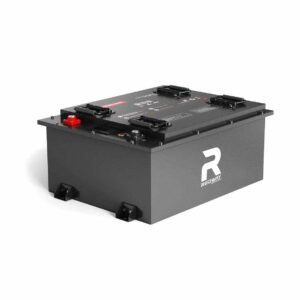How Do You Choose and Maintain a Target Car Battery?
What Is a Target Car Battery?
A Target car battery is a high-quality automotive battery sold by Target, designed to provide reliable power for starting engines and supporting vehicle electronics. These batteries meet industry standards for performance, durability, and compatibility with various car models. Target partners with trusted brands to ensure customers receive batteries with optimal cold-cranking amps (CCA) and reserve capacity (RC).
What Battery Is Used in Telecom Towers?
What Are the Signs Your Car Battery Needs Replacement?

Common signs include slow engine cranking, dim headlights, a swollen battery case, frequent jump-starts, and dashboard warning lights. Age (typically 3–5 years) and failing to hold a charge during voltage tests also indicate replacement. Ignoring these symptoms risks vehicle breakdowns or electrical system damage.
How to Select the Right Target Car Battery for Your Vehicle?
Check your owner’s manual for specifications like group size, CCA, and RC. Match these to Target’s battery options, ensuring compatibility with your car’s make and model. Opt for AGM or lithium-ion batteries for advanced vehicles with start-stop technology. Consult Target’s in-store experts or online tools for personalized recommendations.
How Can You Maximize Energy Efficiency With a 3000-Watt Solar System?
When selecting a battery, consider warranty coverage and brand reputation. Many Target batteries come with 3–5 year warranties, reflecting manufacturer confidence. For hybrid or electric vehicles, verify compatibility with high-voltage systems. Check the manufacturing date stamped on the battery—newer units (under 6 months old) ensure maximum shelf life. If your vehicle has aftermarket accessories like GPS or upgraded audio systems, factor in additional power demands when choosing RC ratings. Target’s online compatibility checker can cross-reference your license plate or VIN to filter precise matches.
How to Install a Target Car Battery Safely?
Disconnect the negative (-) terminal first, then the positive (+). Remove clamps and brackets securing the old battery. Clean corrosion from terminals with baking soda and water. Place the new battery, reconnect terminals (positive first), and secure it tightly. Test the battery with a voltmeter (12.4–12.7V indicates full charge). Dispose of the old battery responsibly.
How Can You Extend Your Target Car Battery’s Lifespan?
Avoid short trips that prevent full charging. Keep terminals clean and corrosion-free. Secure the battery to minimize vibrations. Store vehicles in moderate temperatures and use a maintainer during long inactivity. Test voltage monthly and recharge if it drops below 12.4V. Limit accessory use when the engine is off.
What Are the Prices and Buying Guides for RV Batteries?
What Environmental Impact Do Old Car Batteries Have?
Old lead-acid batteries contain toxic materials like lead and sulfuric acid, which can contaminate soil and water if improperly disposed. Target’s recycling program ensures safe handling, recovering up to 99% of materials for reuse. Always recycle batteries at designated centers to reduce environmental harm.
What Happens If a LiFePO4 Battery Gets Wet? Can Lithium Batteries Get Wet?
How Does Weather Affect Your Car Battery’s Performance?
Extreme cold thickens engine oil, increasing cranking demand and straining batteries. Heat accelerates fluid evaporation and internal corrosion. Store vehicles in garages during temperature extremes. Use insulated battery blankets in winter and park in shade during summer to mitigate weather-related stress.
What You Need to Know About Golf Cart Battery Chargers
Battery chemistry reacts differently to temperature fluctuations. At 32°F (0°C), a battery’s capacity drops by 20%, while at 95°F (35°C), lifespan decreases by 50%. In freezing conditions, AGM batteries outperform flooded ones due to sealed designs. During heatwaves, check electrolyte levels monthly if using traditional batteries. Consider upgrading to batteries with higher CCA ratings if living in colder climates. Below is a temperature impact summary:
| Temperature Range | Effect on Battery | Preventive Measure |
|---|---|---|
| Below 32°F (0°C) | Reduced capacity, slower chemical reactions | Use battery heater or AGM battery |
| 85°F–100°F (29°C–38°C) | Accelerated corrosion, fluid loss | Park in shade, check terminals quarterly |
What Role Does Technology Play in Modern Car Batteries?
Advanced batteries like AGM and EFB support start-stop systems, reducing fuel consumption. Smart batteries with built-in sensors monitor health via mobile apps. Target’s offerings include these innovations, ensuring compatibility with hybrid/electric vehicles and enhancing energy efficiency.
What Are the Best Types of RV Batteries for Your Needs?
Expert Views
“Modern car batteries are engineered for precision. AGM technology, for instance, offers 3x the cycle life of traditional batteries. Always prioritize CCA ratings over price—subpar batteries fail faster in extreme conditions.” — John Michaels, Automotive Engineer
Conclusion
Choosing and maintaining a Target car battery involves understanding specifications, recognizing wear signs, and adopting proactive care. Recycling old batteries and leveraging technology further optimizes performance and sustainability.
FAQs
- Can I replace my car battery myself?
- Yes, with basic tools and safety precautions. Always disconnect terminals in the correct order and recycle the old battery.
- Does Target test car batteries for free?
- Yes, most Target Auto Centers offer free voltage and load tests to assess battery health.
- How long do Target car batteries last?
- Typically 3–5 years, depending on usage, maintenance, and climate conditions.
